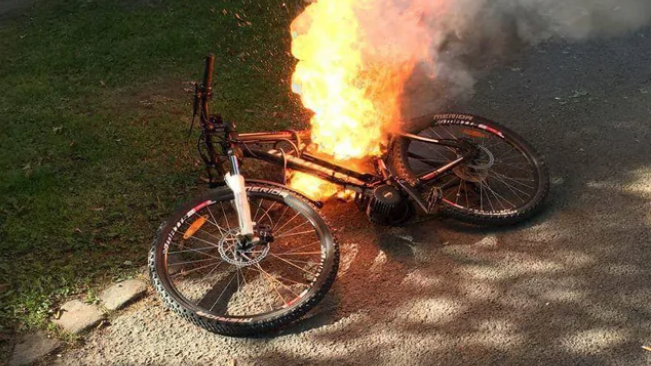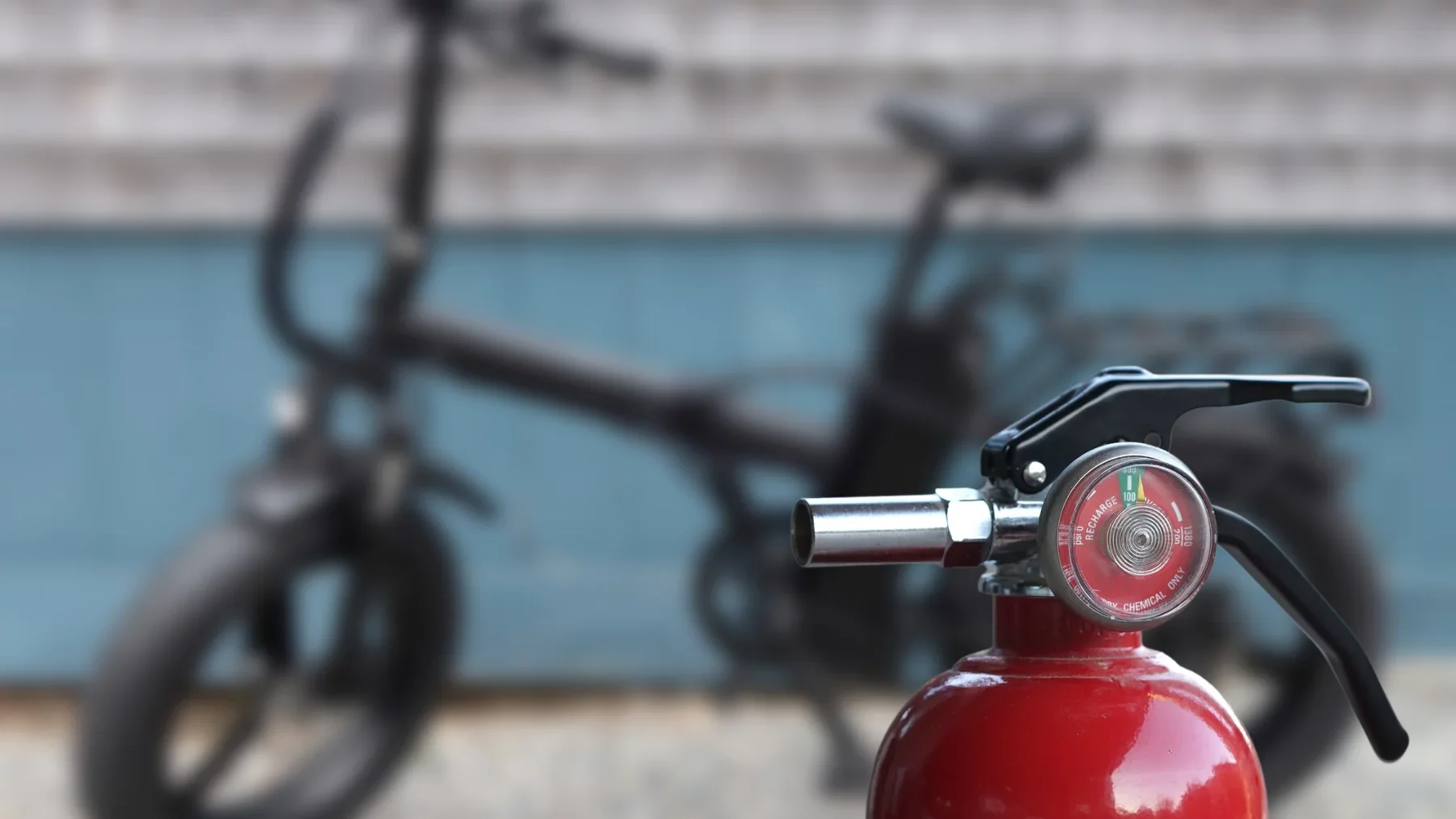Electric bikes or eBikes, have gained significant popularity over the years, and rightly so. They’ve transformed the way we travel, making commutes easier, greener and more efficient. However, like any electronic battery operated device, eBikes do come with a few inherent risks, one being the potential of a lithium battery fire. Understanding these risks, along with the preventive measures you can take, is crucial in ensuring safety during use.
The ‘why’ Behind Lithium Battery Fires:
Lithium-ion batteries store a significant amount of energy. While this makes them perfect for powering your eBike, it also makes them prone to a phenomenon known as battery ‘thermal runaway’ if mishandled. Thermal runaway is a self-sustaining, exothermic chemical reaction within the cells of the battery. This process typically begins when the battery is subjected to conditions (overcharging, rapid discharge), physical damage, short circuiting or temperatures that cause its internal temperature to rise to a critical point. Once this threshold is crossed, it can trigger a chain reaction that further increases the temperature inside the battery. The battery heats up to a point where it can’t cool down, leading to a fire or even an explosion.
How to Prevention and Control Lithium Battery Fires:
Avoiding a lithium battery fire might seem complex, but it genuinely comes down to a few simple precautions one can practise.
- Use the Correct Battery Charger: Always use the battery charger that came with your ebike or a manufacturer-approved alternative. An incorrect charger can result in overcharging, which can subsequently generate excessive heat and potentially cause a fire.
- Monitor Charging of your Lithium Battery: Plan your battery charging, so you can keep an eye on it. Avoid charging your battery overnight or when you’re away from home. Although rare, lithium battery fires can occur during the cycle of charging.
- Maintain Ideal Temperatures: Extreme temperatures negatively affect lithium batteries. Ensure you’re charging your battery in a cool and dry environment, avoiding hot cars or direct sunlight. Also, rapid discharge can adversely impact the condition of the battery, as it too heats up during this cycle period.
- Store your Lithium Battery Properly: If not using your ebike for extended periods, store the lithium battery at a 40%-80% charge level. Fully charging a battery that’s not in use can cause undue stress and internal damage.
- Regular Battery Inspections: Regularly inspect your ebike’s lithium battery for any physical damage, swelling or other defects (moisture ingress, corrosion on connections or terminals). If you notice any issues – a bulging battery case or a frayed wire, for instance – have the battery inspected and replaced immediately if necessary.
- Professional Servicing: Finally, it goes without saying, professional servicing of your ebike and its battery will ensure your ebike and its battery are kept in good condition and the battery life will be maximised. They can spot potential issues early, helping prevent more significant problems down the line.

Fire Mitigation Steps:
In the unlikely event of a fire, safety should be your topmost priority.
- Leave the Area; Call for Help: Safely evacuate the area and call your local fire department. You will not be able to extinguish the fire, via conventional means, as it is a chemical fire and does not need oxygen to maintain itself.
- Use the Correct Fire Extinguisher: The most effective type of fire extinguisher for a lithium battery fire is a Class D extinguisher, which is designed for fires involving flammable metals like lithium. If a Class D extinguisher is not available, a dry powder extinguisher (often marked as ABC or BC) can be used as an alternative.
- Ventilate the Area: If the fire is indoors, ventilate the area if it is safe to do so. Lithium battery fires can release toxic gases, and proper ventilation can help reduce the concentration of these gases.
- Smother the Fire (if Possible): If a suitable fire extinguisher is not available, try to smother the fire with sand or dry dirt. This can help to cut off the oxygen supply and contain the fire.
- Stay at a Safe Distance: Even after the fire appears to be extinguished, the battery can stay hot and potentially reignite. Maintain a safe distance and do not attempt to move or touch the remains until they are completely cooled and it is safe to do so, as advised by the fire department or emergency services.
- Professional Disposal: Even before a potential battery fire, a lithium battery, if swelling or has been damaged, should be disposed of professionally. Post fire, the remnants of a lithium battery after, should too be handled and disposed of by professionals. Contact local waste management stations or recycling centers (local government area / councils) for instructions on disposing of lithium batteries.

The safety and maintenance of ebikes, especially concerning lithium-ion batteries, are crucial for a safe riding experience. While ebikes offer a sustainable and efficient mode of transportation, understanding and mitigating the risks associated with their batteries are imperative. By adhering to recommended manufacturer’s practices such as using the correct charger, monitoring the charging process, maintaining an ideal temperature for storage, conducting regular inspections, and seeking professional servicing, riders can significantly reduce the risk of battery-related incidents. Awareness and preparedness are key in handling such potential emergencies.
